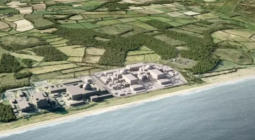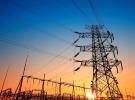Here’s why there is no nuclear option for Australia to reach net zero
Any call to go directly from coal to nuclear is effectively a call to delay decarbonisation of our electricity system by 20 years
The battle lines have been drawn over Australia’s energy future.
With the nation signed up to net zero emissions by 2050, the Albanese Labor government is committed to renewables. The Coalition wants nuclear.
The opposition leader, Peter Dutton, has a vision for meeting Australia’s energy needs that would include large-scale nuclear power plants and small modular reactors, a technology that is not yet proven, but which the shadow minister for energy, Ted O’Brien, says could be “up and running within a 10-year period.”
While nuclear power might experience a resurgence globally and eventually have a role in Australia, right now, no matter how much intent there might be to activate a nuclear power industry, it is difficult to envision before 2040.
The reality is there is no substitute for solar and wind power this decade and next, supported by batteries, transmission lines and peaking gas generation.
Any call to go directly from coal to nuclear is effectively a call to delay decarbonisation of our electricity system by 20 years.
Let’s unpack the pros and cons of nuclear power, the obstacles to getting it up and running in Australia by the mid-2040s, and the longer-term prospects.
The pros
From a purely engineering perspective, there is no better source of zero emissions electricity than nuclear power. The reasons are many.
Compatibility. Nuclear power plants can dispatch electricity when requested and they are directly compatible with the 50 cycles a second alternating current (AC) electricity system.
In contrast, solar and wind power generators do not have inertia, do not have system strength, cannot dispatch when requested and do not provide synchronous AC power. Nevertheless, these features can be integrated into the system through modern power electronics and battery systems.
The mining footprint of nuclear is small. There is no need for battery materials such as lithium, manganese, nickel or cobalt. Nor is there need for rare earth elements such as europium, terbium, neodymium and many others.
Nuclear uses modest amounts of copper, steel and concrete.
The footprint for uranium mining is small because only 1 tonne of uranium in a nuclear power station is needed to produce the same amount of electrical energy as approximately 100,000 tonnes of coal in a coal-fired power station.
The real estate footprint is small. Approximately three square km of land is needed for a 1 gigawatt (GW) nuclear generator, although there would always be an additional exclusion area surrounding the site.
In contrast, solar farms need about a square kilometre of land area for each 50 megawatts of generation capacity. Thus, a 3GW solar farm producing the same annual generated energy as a 1GW nuclear plant would require about 60 square km.
Windfarms need almost 10 times more area than solar farms per megawatt although most of the land between the turbines can continue to be used for agriculture.
In principle, nuclear power plants can be located close to existing transmission lines or even at old coal-fired power stations. In practice, this may not be possible because of surrounding populations, or the power stations being repurposed by their owners.
The safety record of nuclear power is excellent. That is despite high profile accidents such as Three Mile Island, Chornobyl and Fukushima.
The deaths from accidents and air pollution per unit of electrical energy generated are comparable with solar and wind power, in the extremely low end of the range at less than 0.05 deaths per terawatt-hour. Hydroelectric power is the next lowest at 1.3 deaths per terawatt-hour. Coal has the highest rate, at 25 deaths per terawatt-hour.
The cons
There are challenges for nuclear power in Australia, most notably timetable and cost.
Legislation. Commonwealth legislation passed by the Howard government in 1998 prohibits nuclear power. Australia is the only country in the G20 to have a legislated ban on nuclear power. This would need to be lifted before anything else could happen.
Public support. An August 2023 poll by the Resolve Political Monitor found 40% of people backed nuclear power, 33% were undecided and 27% were opposed. It is likely that no matter how small the opposition, it will be vocal.
Ramp rate. Large nuclear power generators cannot ramp up and down rapidly like batteries or peaking gas generators. This reduces their compatibility with a predominantly solar and wind powered electricity grid. It is expected, though, that small modular reactors (SMRs) will be better in this respect than large, conventional reactors.
Falling investment. The various operational, political and cost challenges faced by the nuclear industry have led to nuclear’s share of global electricity generation falling from more than 17% in 1996 to 9% in 2022.
Starting from scratch. It is unlikely that Australia would switch from being a laggard to a leader. That is, we would not proceed before we saw a licensed SMR (not a prototype) operating in the US, Canada, UK or another OECD country.
After that, we would need to beef up the regulatory system, find the first site, find and license the first operator, approve and issue construction contracts, establish a waste-management system, establish the decommissioning rules and decommissioning fund, run the environmental and safety regulatory gamut, train a workforce, respond to the inevitable protests and respond to the inevitable legal opposition all the way to the high court.
Only then could construction begin. It is difficult to imagine all this could be accomplished and provide an operational nuclear reactor in Australia before the mid 2040s.
The cost of wind versus nuclear
Coal-fired generators and nuclear power generators can dispatch electricity at full power more than 90% of the year. In practice, because demand fluctuates, the typical dispatch level from the Australian coal-fired fleet is about 60%.
For comparison, what would be the capital cost of a wind farm to dispatch 60% of the year? A simplified approach would be to ignore market economics and the variability of solar electricity in the system, and assume a 30% capacity factor for the wind energy. With these assumptions, for a windfarm to dispatch 60% of the year, we would need to install 2GW of wind turbines. The first 1GW of turbines would dispatch when the wind is blowing. The second 1GW of turbines would be used to charge a 7GW-hour (GWh) battery, to be discharged into the grid on demand.
Using figures from the CSIRO’s GenCost draft 2023-2024 report, the cost in this simplified model would be around $7bn per GW. Other, less costly, integration configurations are available. In comparison, based on the latest cost estimates for the Hinkley Point C plant under construction in the UK, the cost for nuclear power would be $27bn per GW.
The big opportunity in thinking small
In Australia, we would be looking to use SMRs because of the enormous cost and construction delays of large-scale nuclear plants. But we will want the reassurance of first seeing SMRs work safely and well in the UK, Europe, Canada, the US or another OECD country.
The trouble is, there are no SMRs operating in the UK, Europe, Canada, the US or any other OECD country. Nor are any SMRs under construction or approved in an OECD country.
There is no data to support any claims about how much SMRs will cost when deployed as operating power stations.
Still, introducing nuclear power when we can, starting in the 2040s, would bring benefits. Most importantly, nuclear power generation would reduce the ongoing mining footprint for the regular replacement of solar panels, wind turbines and batteries and the expanded electricity generation to support decarbonising our exports and population growth.
For these reasons, it would be worth removing the ban on nuclear power so that we can at least thoroughly investigate the options.
Cover photo: ‘This decade and the next we have no choice but to steadily invest in solar and wind generation.’ Photograph: Posnov/Getty Images




